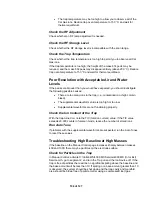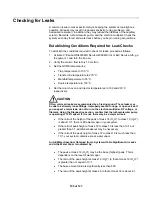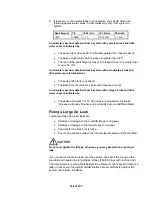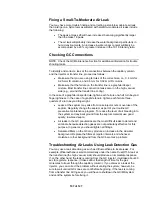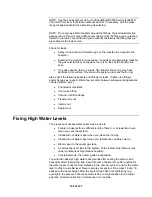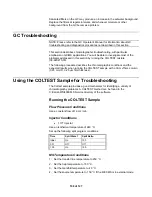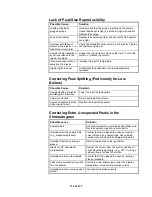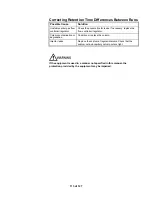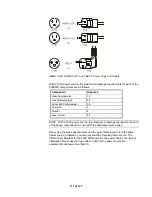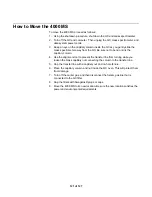
Quality of Power
The quality of the power supplied to your 4000 MS is very important. The power
must be 90 -130 Vac, 60 Hz
±
3 Hz (180-260 Vac, 50 Hz
±
3 Hz), and it must be
stable. It must be free of fluctuations due to slow changes in the average voltage
or to changes resulting from surges, sags, or transients.
•
Slow average changes are gradual, long-term changes in the average
root mean square (RMS) voltage level, with typical durations greater than
2 seconds.
•
Sags and surges are sudden changes in average RMS voltage level,
with typical durations between 50 µsec and 2 seconds.
•
Transients (or impulses) are brief voltage excursions of up to several
thousand volts with durations of less than 50
μ
sec.
Constant high line voltage or surges in voltage can produce overheating and
component failures. Constant low line voltage or sags in voltage may cause the
system to function erratically or to stop functioning. Transients, even of a few
microseconds duration, may cause electronic devices to fail catastrophically or
degrade sufficiently to significantly shorten their lives. Therefore, it is important to
establish the quality of the line power in your laboratory before you install your
4000 MS.
Occasionally, you may encounter line power sources of unacceptable quality;
such power sources may adversely affect the operation of the 4000 GC/MS. The
4000 GC/MS is tested under EMC Standard 61326-A1 + A2. If voltage conditions
exceed those standards, additional power conditioning or surge protection is
advised. You may want to contact a specialist in power conditioning services.
To protect against power failures, an Uninterruptible Power Supply (UPS) can be
used. The amount of power drawn depends on instrument operating conditions
but 4KVA should be sufficient under typical acquisition conditions, at normal line
voltage. Greater power may be drawn during system power up or bakeout. The
UPS should have a switchover time of 20 ms. or less.
Operating Environment
It is your responsibility to provide an acceptable operating environment. Attention
paid to the operating environment will ensure continued high performance of your
4000 MS. Expenditures for air conditioning will be more than offset by good
sample throughput and a reduction in repair costs.
Temperature
The laboratory temperature must be held between 15 and 30
°
C (59 and 86
°
F).
As the laboratory temperature increases, system reliability decreases. All
electronic components generate heat while operating. This heat must be
dissipated to the surrounding air if the components are to operate reliably.
118 of 127
Содержание 4000 GC
Страница 4: ......
Страница 40: ...6 of 127...
Страница 77: ...3 Check source connection pins for proper alignment and straighten as necessary 43 of 127...
Страница 124: ...90 of 127...
Страница 148: ...114 of 127...

